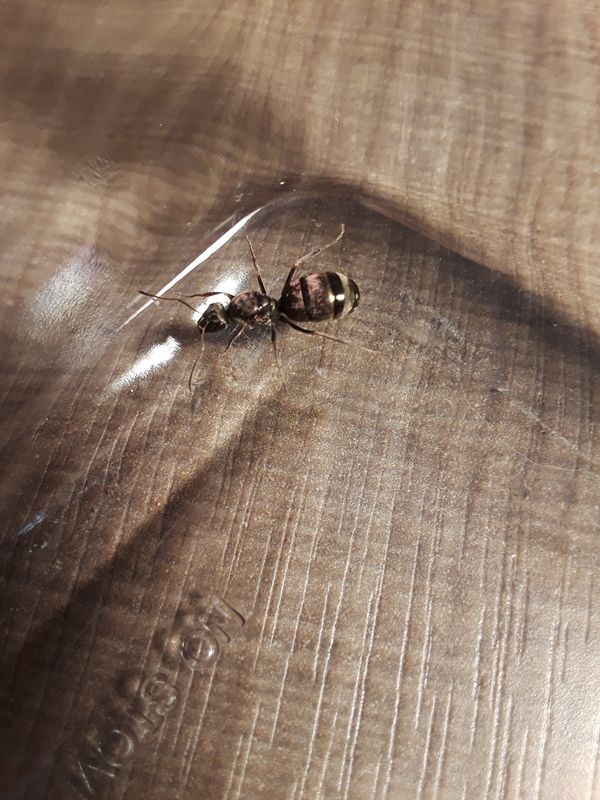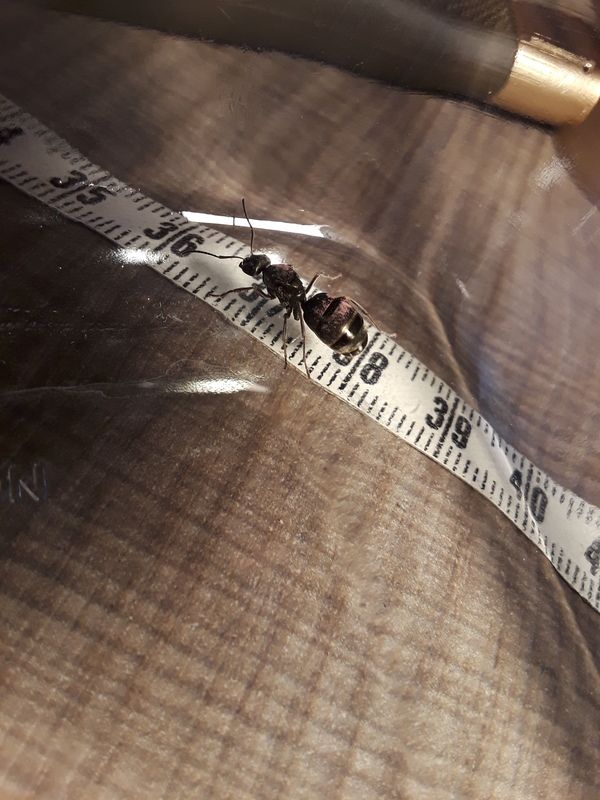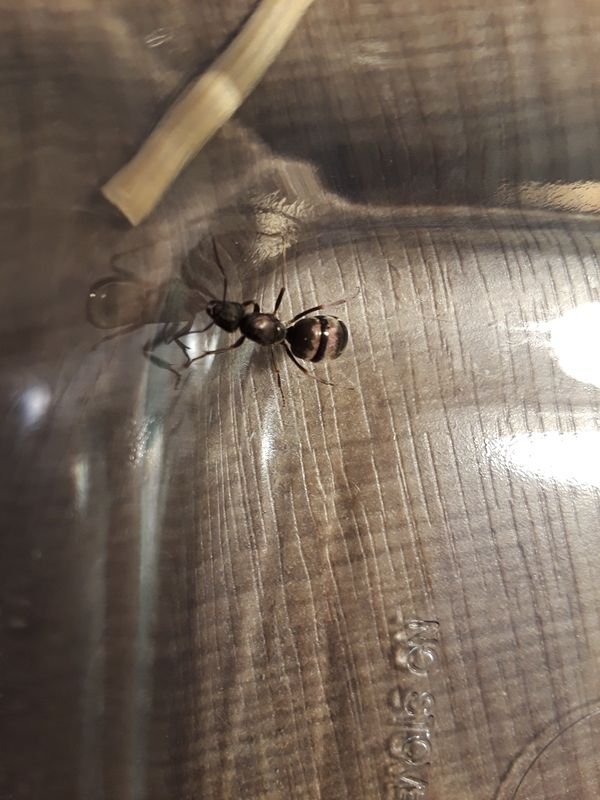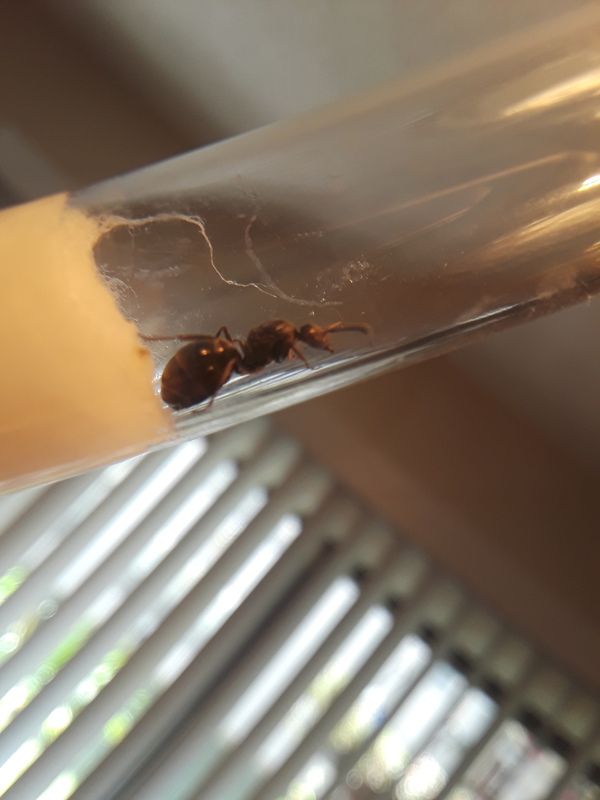Post: # 41581Post
kykel09
Wed Jul 18, 2018 10:01 am
Definitely not Camponotus. Too small and she's got too much pubescence on her gastor for Camponotus P. But, she is a bit large for Lasius and they tend to fly another month out this far north. Most likely she's a Formica. Mid July, large black ant with shiny pubescence, that'd be what I'd bet. Narrowing it down from there can be tricky though. I'll see what I can find. The large bands she has are quite interesting. She' very dark black, and shiny. At first glance, I'd say Formica fusca. They call them the silky ant because of that gray shiny look they have, almost like silk. Could also be Formica subsericea. They have more prominent black bands on their gastors.
For now, until it's narrowed down, I would call it a Formica sp. Maybe someone with more Formica species experience can help you narrow it down more. I only just caught my first Formica this year.
Formica subsericea
http://www.antwiki.org/wiki/Formica_subsericea
https://bugguide.net/node/view/243156
Formica fusca
http://www.antwiki.org/wiki/Formica_fusca
https://en.wikipedia.org/wiki/Formica_fusca
Care sheet
https://cdn.shopify.com/s/files/1/1031/4421/files/Formica-fusca.pdf
Charlottesville, VA GAN Farmer
Seller of 3D Printed Nests
Owns:
Camponotus nearcticus
Camponotus castaneous
Camponotus pennsylvanicus
Phiedole bicarinata
Tetramorium immigrans
Forelius pruinosis




